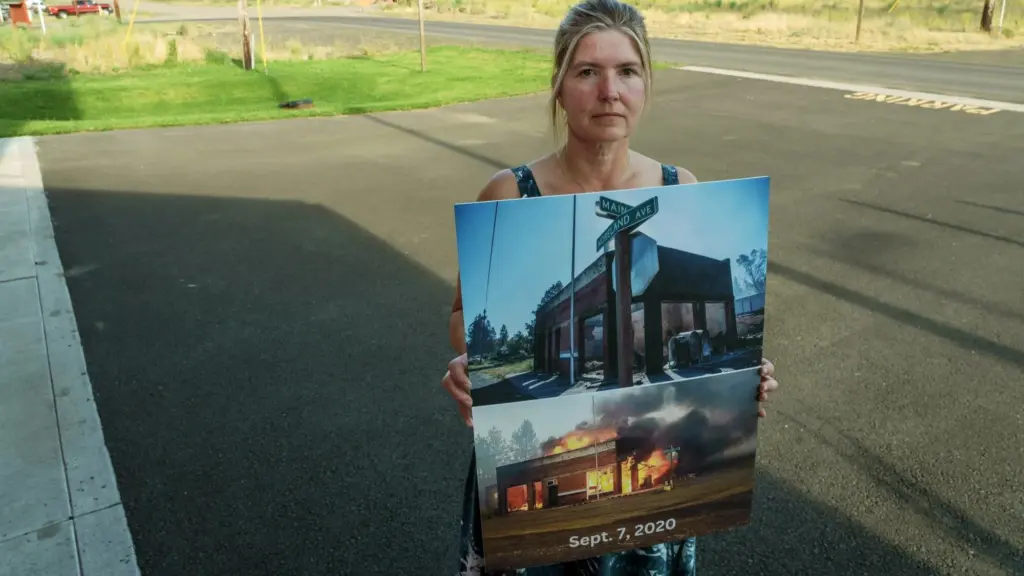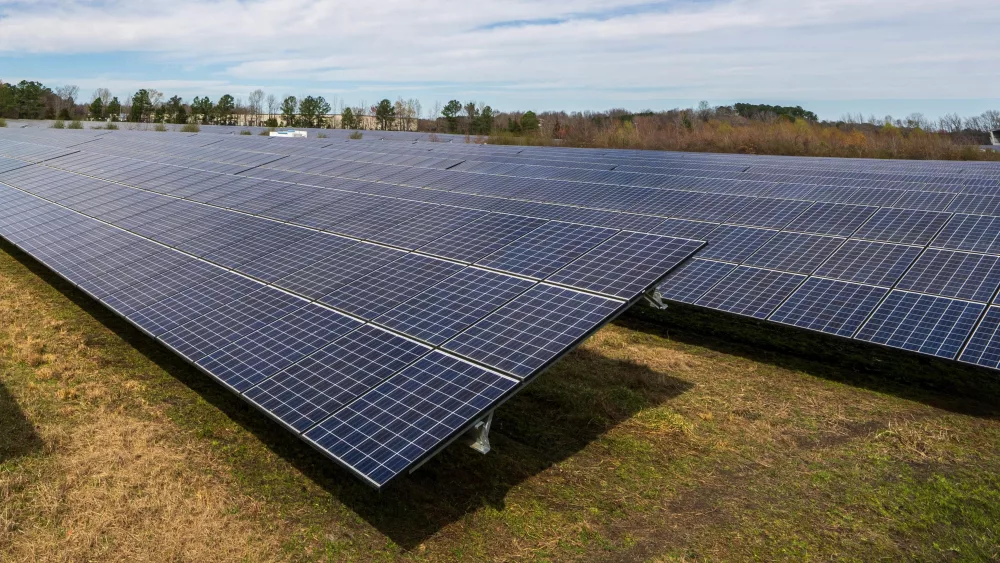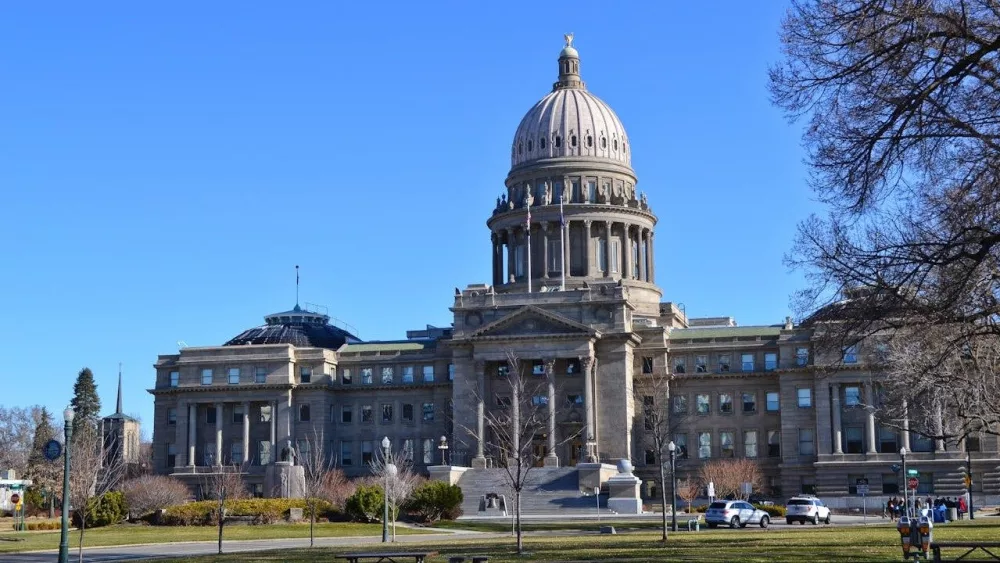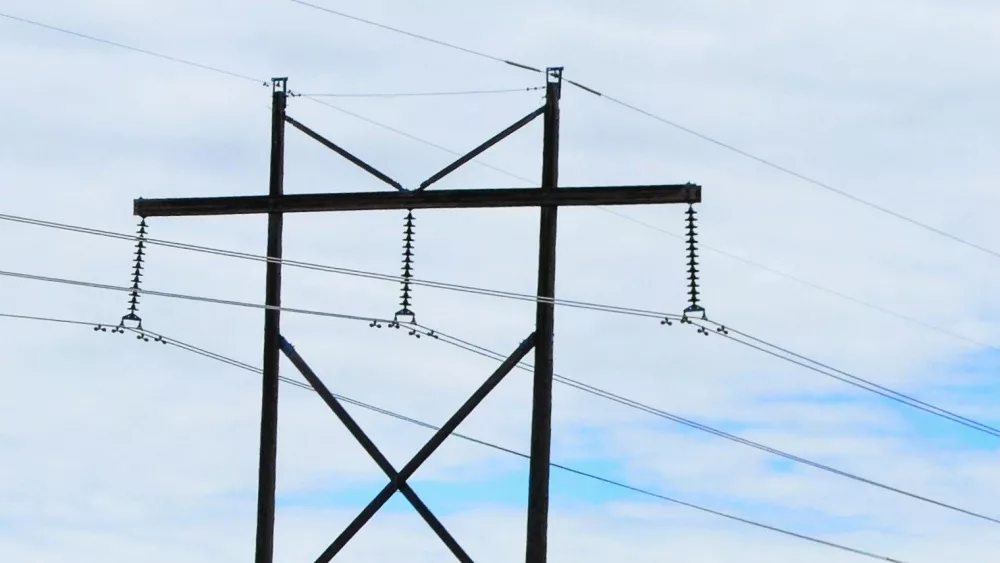Five years after its power lines started a devastating fire in Malden, Avista has settled lawsuits for $27M — but fallen behind on disaster prevention.
MALDEN, WA – Tiffany Hogg opened a barbecue lid and poured teriyaki sauce onto chicken breasts. Closing the lid, she rushed back into a nearby RV trailer, where the shrieks of her three children mingled with the whir of a fan struggling to cut the July heat.
The RV has long sat parked near the footprint of her former two-story home. Where her front entryway once stood, Hogg’s yard now holds a garbage can and a refrigerator. Charred tree branches slouched overhead.
On Labor Day 2020, a diseased tree fell on power lines operated by Avista Corp., the investor-owned electrical utility that serves much of Eastern Washington. High winds whipped the resulting sparks into the fast-moving Babb Road Fire that would blacken over 15,000 acres, torching Hogg’s home and more than 120 others near the tiny towns of Malden and Pine City.
Hogg recalled returning the next day, blinded by smoke, to survey the damage.
“Nothing could be salvaged,” she said. “It was all melted and mixed in together.”

Nearly five years later, Washington regulators have done little to push utilities to reduce the risk of their equipment sparking devastating wildfires. Avista recently agreed to pay millions of dollars to settle lawsuits from victims and insurers, but unlike its peers in California has not pursued infrastructure upgrades that experts say prevent fires. Other western utilities have lobbied state governments to protect them against lawsuits.
Malden residents have scrabbled to rebuild after falling short of FEMA requirements for aid to help rebuild their homes. And neither the state nor county offer post-disaster compensation to homeowners, according to Malden’s mayor – leaving families like Hogg’s with few resources to recover what they lost.
Many scars still linger in Malden, a town that lacks a single brick-and-mortar business. Ashen trees dot the landscape, and concrete foundations peek out from vacant lots, exposed like ruins. The rubble of the old post office lies abandoned by its private owner. A skeleton of wooden pillars looms atop a hill over the town – as local legend has it, the beginnings of a barn planned by an unscrupulous contractor who cut and ran.
For Hogg, every day is a reminder.
“It’s like a loop,” she said, wiping sweat from her brow as her daughter pounded on the RV screen door. “Just waking up and thinking, ‘Oh yeah, we’re still in this trailer.’

Avista settles lawsuits
Branches of the ponderosa pine that fell on Avista’s power cables had previously snapped off and insects had bored holes throughout its trunk, according to an investigation by the state Department of Natural Resources.
“It is my opinion that because of the unusual configuration of this tree, and its proximity to the powerline, a closer inspection was warranted,” a DNR investigator wrote.
At least 128 individuals and 51 insurance companies joined lawsuits against Avista over the damage, arguing the company failed to clock the danger posed by the diseased tree and should have de-energized its lines in response to a red-flag warning predicting high winds amid summer drought.
After years of legal negotiation, Avista and its tree-trimming contractor agreed in April of this year to settle the combined cases for $27 million, according to a recent SEC filing. Avista will pay $21 million of that total. The filing emphasized the company would “vigorously defend itself” against any remaining legal claims.
“The Company contends that applicable inspection standards did not require a closer inspection of the otherwise healthy tree,” the Avista filing stated, “nor was the Company negligent with respect to its maintenance, inspection or vegetation management practices.”
Avista spokesperson Paul Kimmel said the company did not make any policy changes after the Malden fire, which he called “an unfortunate accident.” Kimmel noted that the company spends tens of millions per year on vegetation management.
“People day to day here are not coming up and saying, ‘You’re at fault,’” Kimmel told Cascade PBS.
Documents obtained by public records request from the Cities Insurance Association of Washington show $7.25 million went to a group of insurance companies, including the municipal risk pool.
Individual plaintiffs’ payouts varied. Lead plaintiff Shane Blakeley told Cascade PBS he was awarded $375,000, minus a 33% cut for attorneys’ fees and $15,000 for expert fees. Dawn Koehler, a Malden resident also still living in an RV, told Cascade PBS she received less than $100,000.
“Let’s put it this way, I was hoping to get enough to buy at least one of those,” she said, gesturing to her neighbor’s tiny home on wheels. “And it didn’t even come close.”
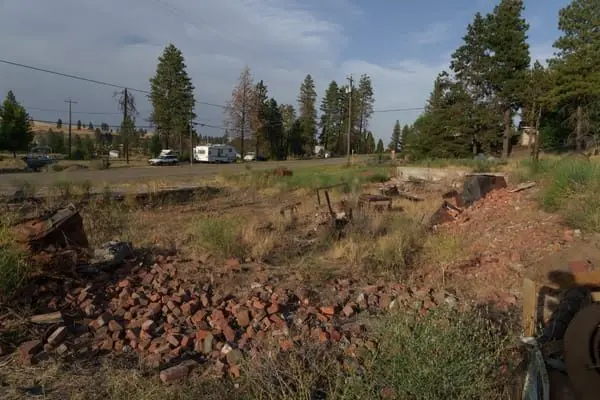
‘We don’t have a plan’
Koehler had just opened the back door to let her dogs out, she recalled, when she saw two plumes of smoke converging from different directions. Within 20 minutes, her neighbor’s house had caught fire. Next it consumed her garage, where her “old man” revved up his motorcycle, barely outrunning the growing flames.
All that remains of her home is a hole in the ground, a charred tree stump and some lengths of chicken-wire fence. To this day she still breaks into tears when she drives through an area that’s been burned.
“It changes you,” Koehler said.
After the Malden fire, President Trump denied FEMA aid for months amid a dispute with then-Gov. Jay Inslee. At the beginning of his term in 2021, President Biden authorized disaster aid, but the money applied just to the reconstruction of public buildings, not for individuals to rebuild homes.
Koehler qualified for a $50,000 Small Business Administration loan, which she used to buy sheet metal walls with the intention of building what she called a “barn-dominium.” But the money was not enough to afford a foundation. Now the metal sheets lie piled underneath a tarp in the yard.
This will be Koehler’s fifth winter living out of an RV. She affixed a heater underneath the engine to keep the pipes from freezing again.
“We don’t have a plan,” Koehler said. “We’re stuck.”
After the fire, Hogg and her long-term partner, Kevin Anderson, received a $76,000 insurance payout for the house. They still owed the bank for their mortgage on the destroyed home, which they paid off in a lump sum, tanking their credit. And Anderson needed a car to get to his job as a powder-coater in Cheney, a 30-minute drive away. The best they could afford at the time was their RV.
“I was in the dark about the credit business,” Anderson said. “It happened quick. I had to make a choice.”
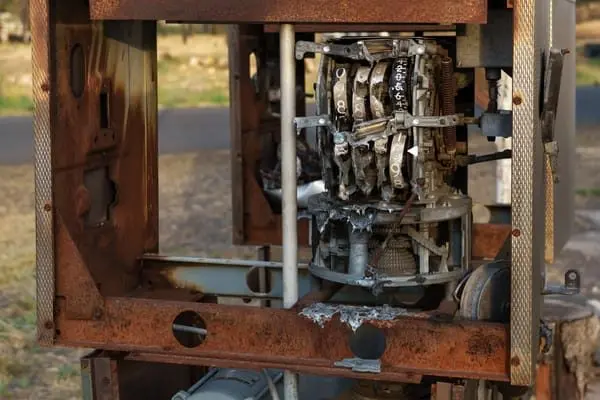
WA lags behind western states
The 2018 Camp Fire, which killed over 80 people in the town of Paradise, brought major changes to California. The resulting $13 billion settlement helped push Pacific Gas and Electric into bankruptcy. Regulators tightened rules around preventative shutoffs. Now California utilities are spending tens of billions on fire-prevention projects like burying their wires underground.
Washington has suffered deadly utility-sparked fires too. Three firefighters died in the Twisp River Fire after a tree branch fell on Okanogan County Electric Cooperative power lines in 2015. And one person died in Medical Lake in 2023 after a light box operated by Inland Power & Light started the Gray Fire.
But Washington lawmakers have not pushed utilities to invest in system upgrades or demanded safety changes.
“California has had some very catastrophic wildfires that have lost many lives, and that makes a big difference in PR,” said Cassie Koerner, assistant director of the energy policy institute at Boise State University. “I don’t believe that currently Avista and probably the other utilities in Washington are under that much of a microscopic lens.”
Even after the 2020 fire devastated Malden and Pine City, Avista opted not to respond to high-risk wildfire conditions with preventative blackouts, which have become standard practice in California. The company later told regulators that planned shutoffs could cost as much as $57 million per year to manage, a number it later walked back to $3 million.
Only last September, four years after Malden, did the company implement its first preventative blackout, cutting power for about seven hours during a Spokane-area windstorm. The state agency that regulates investor-owned utilities could not say whether other preemptive shutoffs have occurred because they do not track that information.
Washington’s limited utility oversight is fragmented. DNR investigates fires and recoups firefighting costs but does not pursue damages, even when they identify a negligent party. The Utilities and Transportation Commission is charged with overseeing investor-owned utilities, but told Cascade PBS it has not fined or taken any other disciplinary actions against utilities found to be at fault.
The UTC does not require utilities to report when their lines spark blazes.
“We’re not seeing as strong of a push [in Washington] and I think that that’s allowing the utilities within the state to take a more paced approach to how to upgrade the system,” Koerner said. “But the cost of that is there could be something catastrophic in the meantime.”
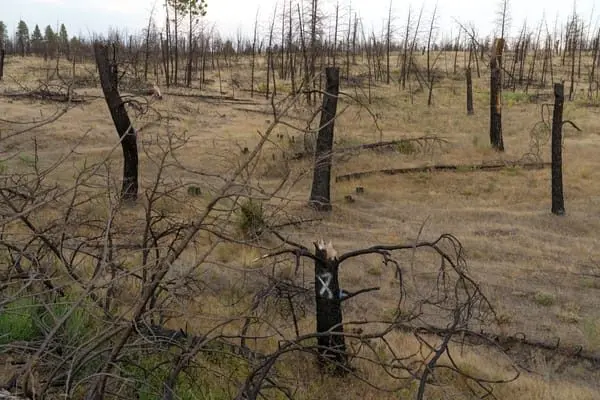
Moving slowly can be strategic for utilities, Koerner said, because to fund upgrades, companies must seek permission from the UTC for rate hikes, which the agency scrutinizes much more closely than wildfire preparedness.
“Washington, they’re really interested in protecting consumers,” Koerner said. “They’re very critical of spending by utilities and they want to make sure that they’re not just going out and spending money for no reason.”
The only wildfire oversight the UTC could point to were state-mandated wildfire mitigation plans, which Washington lawmakers began requiring utilities to submit in 2023. Utilities supported the legislation. They had already been making wildfire plans to satisfy insurers.
Earlier this year, the Legislature empowered the UTC to approve or reject the plans within 120 days of their filing, but an agency spokesperson wrote in an email that they do not currently intend to act on that authority because all three major utilities submitted plans before the law took effect.
The UTC spokesperson said they expect the utilities to submit new plans that they would review, but did not provide a timeframe. The law requires utilities to submit plans every three years.
Vern Malensky, Avista’s director of wildfire resiliency, told Cascade PBS that maintaining affordability remains a consideration as the company increases spending on infrastructure to prevent future fires.
But Tad Robinson O’Neill, public counsel for the state Attorney General’s Office, noted that all three of the state’s biggest investor-owned utilities failed to include cost-benefit analyses of their fire-prevention strategies in their plans, despite a legal requirement for them to “incorporate cost-effective measures to minimize wildfire risk.”
O’Neill recommended that the UTC commissioners order companies to perform cost-benefit analyses and track and report utility-caused ignition events.
The UTC commissioners did not adopt either recommendation.
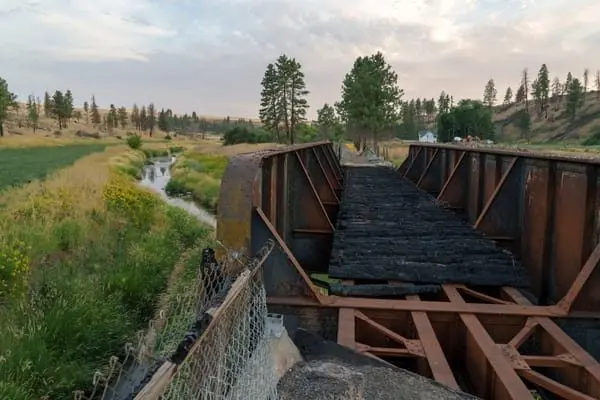
Risk management
The most effective (and expensive) way for utilities to prevent wildfires like the one in Malden is to bury power lines underground. But experts point to a cheaper method that is also highly effective: insulating wires in a fire-resistant polymer.
Joseph Mitchell, a wildfire researcher and consultant based in San Diego County, analyzed years of internal data from Southern California Edison, a utility that prioritized insulation. Mitchell’s analysis found that insulation reduced ignitions by more than 70% and was particularly effective at preventing vegetation-related sparks like the one that ignited the Babb Road Fire in Malden.
Avista told state regulators last year that they have undergrounded less than 2% of their power lines. And the company’s state-mandated plan does not mention insulating lines.
Malensky told Cascade PBS that insulating wires poses technological challenges that the company has yet to fully figure out.
“From a technical side, there’s just some system protection capabilities that we do not have a lot of familiarity with,” Malensky said. “We need to be able to have some time to better understand that, as well as pick the right equipment.”
He noted that the company has installed a few miles of insulated lines as part of a “feasibility project.”
Instead of insulating, Avista points to other strategies in its plan, such as replacing wooden poles with metal ones, wrapping poles in fire-resistant mesh and installing animal guards. But Avista has made those upgrades to just 600 of its 7,650 miles of power lines since 2020, the company told the state last year. At that rate, it would take until 2060 to update the entire grid.
Documents submitted to the UTC show that Puget Sound Energy, which serves much of Western Washington, and Pacificorp, which serves 140,000 customers around central Washington, have also made limited investments in insulating their grids. PSE insulated less than 11 of its more than 20,000 miles of power lines between 2022 and 2024. Pacificorp insulated just 21 of its 4,000 miles of power lines, and told the UTC last year it does not plan to upgrade any more.
But Pacificorp, which is owned by Warren Buffet’s Berkshire Hathaway, has been active in other ways. The company is now lobbying Western states to shield utilities against liability from the fires their equipment causes.
Pacificorp succeeded in passing legislation in Wyoming, Utah and Idaho that makes it easier for the company to defend itself in court and caps the amount it would pay to fire victims if found liable, Politico recently reported.
Idaho’s bill provides utilities with presumptive protection from negligence claims so long as they’ve done just one thing: “reasonably implemented” their wildfire mitigation plans.

Rebuilding
Malden Mayor Dan Harwood patted dirt off his cargo shorts as he fielded phone calls at his desk in the combined town hall/fire station/post office.
Two months earlier, he had cut the ribbon on a long-awaited new community center, which houses a library and food bank. FEMA provided $4.5 million for the construction, and another recent federal grant will help the town build a sewer system.
Compared to five years ago, it felt like a lot of progress.
“Everybody can look at the downside of a disaster,” Harwood said. “You can’t change the past, and we’ll never forget the past. But what we can do is remember the past and move to the future – and that’s what we’re doing every day.”
Harwood estimates 28 homes have been rebuilt in Malden since the fire. Several of those were built by members of the Western Anabaptist Missionary, or as Malden residents refer to them, the Amish homes.
Avista has played an integral role in the recovery, according to Harwood. The company provided LED street lights as well as solar panels for the town hall and library, which Harwood says reduced their monthly bill to $26. The city did not file a claim in the Avista lawsuits and did not receive any of the settlement money, Harwood said.
The company also helped Malden residents form a nonprofit long-term restoration group, which has helped fund foundations and septic systems for new houses. The group is now planning community projects like a BMX bike track and a baseball diamond. It also helps pay for a herd of goats to graze on fire-fuel vegetation.
“We’ve had some success,” said Chandelle Frick, director of the long-term restoration group. “But knowing there’s still families in RVs, does that feel successful knowing that? No, absolutely not.”
Help may be coming soon for Hogg and Anderson: They are slated to receive an Amish house. Some questions remain about financing the septic system, but construction is planned to begin early next year.
Like Hogg, Anderson’s post-fire narrative tends to loop. When he revisits the sequence of events – the evacuation, his insurance policy, the lawsuit he declined to join, the zoning rules and contractors – his head starts to spin.
What he still remembers clearly was the initial excitement of moving here with Hogg, two years before the fire. They came from Everett, and had scoured the state for anywhere they could afford to buy a house.
“We felt like we found a diamond in the rough,” Anderson said, recalling the apple tree and the garden they had dreamed of starting. “We fell in love with it. … We wanted to get married in the backyard.”
After the fire, Anderson thought he might try to build a new home himself.
He used an excavator to fill in the crater where his home used to stand. He noticed, while landscaping, how the fire mangled the earth itself, once-level ground now warped by clumps and divots. Rebuilding on his own proved too much, and he now recalls the impulse with weary resignation – a sunken attempt to dig his family out from under forces he could not control.
“I thought it was a good idea,” Anderson said. “It really didn’t turn out the way I wanted it to.”

